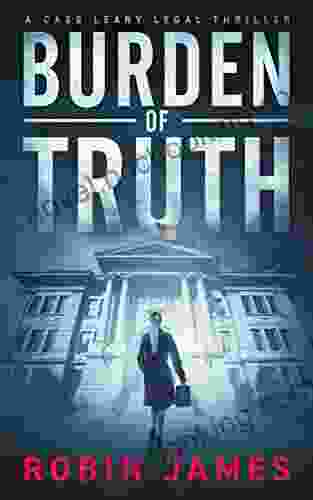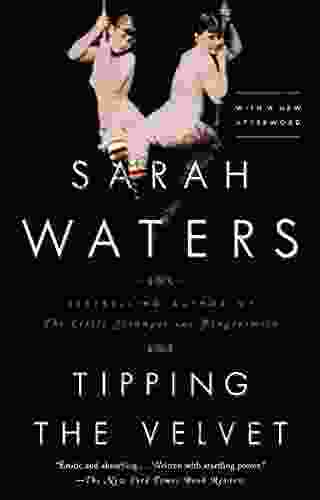Representations of Modernity, Race, and Nation in Early Modern Dance

Dance has long been recognized as a powerful form of cultural expression. It can be used to communicate emotions, tell stories, and create a sense of community. In the early modern period (c. 1500-1800),dance played a particularly important role in the formation of new social and political identities.
This book explores the ways in which early modern dance was used to represent and shape notions of modernity, race, and nation. Drawing on a wide range of sources, including dance treatises, performance reviews, and visual representations, the book argues that dance played a central role in the construction of new social and political identities in the early modern period.
The early modern period witnessed a significant shift in the way that dance was conceived and performed. Prior to this period, dance was primarily associated with the aristocracy and the court. However, in the early modern period, dance began to be practiced by a wider range of people, including the middle class and the lower classes.
4.7 out of 5
| Language | : | English |
| File size | : | 3674 KB |
| Text-to-Speech | : | Enabled |
| Screen Reader | : | Supported |
| Enhanced typesetting | : | Enabled |
| Word Wise | : | Enabled |
| Print length | : | 232 pages |
This shift in the social status of dance was accompanied by a change in the way that it was performed. Early modern dance was characterized by a new emphasis on virtuosity and technical skill. Dancers began to develop new and innovative movements, and they began to perform in a more stylized and theatrical manner.
The rise of modern dance was also accompanied by a change in the way that it was perceived. Early modern dance was seen as a form of entertainment, but it was also seen as a way to express one's individuality and to explore new possibilities of human movement.
In the early modern period, dance was often used to represent and reinforce racial hierarchies. In Europe, for example, white dancers were often depicted as superior to black dancers. This was due in part to the fact that Europeans believed that they were racially superior to Africans.
The representation of race in dance was not limited to Europe. In the Americas, for example, white colonists often used dance to portray Native Americans as savage and uncivilized. This was due in part to the fact that colonists believed that they were racially superior to Native Americans.
The representation of race in dance was a powerful way to reinforce racial hierarchies. It helped to create and maintain a sense of white superiority and black inferiority.
In the early modern period, dance was also used to represent and shape notions of nationhood. In Europe, for example, dance was used to create a sense of national unity and pride. This was especially true in countries that were struggling for independence or that were engaged in war.
The representation of nation in dance was not limited to Europe. In the Americas, for example, dance was used to create a sense of national identity and to celebrate the achievements of the new nation.
The representation of nation in dance was a powerful way to create and maintain a sense of national identity. It helped to create a sense of belonging and to inspire people to work together for the common good.
Dance played a central role in the formation of new social and political identities in the early modern period. It was used to represent and shape notions of modernity, race, and nation. Dance was a powerful tool for creating and maintaining social hierarchies, and it was also a way to express one's individuality and to explore new possibilities of human movement.
This book has explored the ways in which early modern dance was used to represent and shape notions of modernity, race, and nation. It has argued that dance played a central role in the construction of new social and political identities in the early modern period.
Image alt attributes
| Image | Alt attribute | |---|---| | Image of a group of early modern dancers performing. | A group of early modern dancers performing in a stylized and theatrical manner. | | Image of a white dancer performing a solo. | A white dancer performing a solo in a virtuoso and technically skilled manner. | | Image of a black dancer performing a solo. | A black dancer performing a solo in a stylized and theatrical manner. | | Image of a group of dancers performing a patriotic dance. | A group of dancers performing a patriotic dance in a stylized and theatrical manner. |
4.7 out of 5
| Language | : | English |
| File size | : | 3674 KB |
| Text-to-Speech | : | Enabled |
| Screen Reader | : | Supported |
| Enhanced typesetting | : | Enabled |
| Word Wise | : | Enabled |
| Print length | : | 232 pages |
Do you want to contribute by writing guest posts on this blog?
Please contact us and send us a resume of previous articles that you have written.
 Book
Book Novel
Novel Page
Page Chapter
Chapter Text
Text Story
Story Genre
Genre Reader
Reader Library
Library Paperback
Paperback E-book
E-book Magazine
Magazine Newspaper
Newspaper Paragraph
Paragraph Sentence
Sentence Bookmark
Bookmark Shelf
Shelf Glossary
Glossary Bibliography
Bibliography Foreword
Foreword Preface
Preface Synopsis
Synopsis Annotation
Annotation Footnote
Footnote Manuscript
Manuscript Scroll
Scroll Codex
Codex Tome
Tome Bestseller
Bestseller Classics
Classics Library card
Library card Narrative
Narrative Biography
Biography Autobiography
Autobiography Memoir
Memoir Reference
Reference Encyclopedia
Encyclopedia Sarak Ardestani
Sarak Ardestani Stephanie Thornton
Stephanie Thornton Wilfred M Mcclay
Wilfred M Mcclay Robin Cormack
Robin Cormack Smiley Beagle
Smiley Beagle Sandi Schwartz
Sandi Schwartz Rosamund Dean
Rosamund Dean Rosalind Wiseman
Rosalind Wiseman Sarah Mlynowski
Sarah Mlynowski Susan B Katz
Susan B Katz Dan Anderson
Dan Anderson Robert D Bolen
Robert D Bolen Roger Mcgough
Roger Mcgough Ron Franscell
Ron Franscell Randy Woodley
Randy Woodley Richard M Lytle
Richard M Lytle Rosina Acheampong
Rosina Acheampong Richard Munson
Richard Munson Trent Harding
Trent Harding Steve Bartylla
Steve Bartylla
Light bulbAdvertise smarter! Our strategic ad space ensures maximum exposure. Reserve your spot today!

 Brody PowellBurden of Truth: The Gripping Legal Thriller That Will Keep You on the Edge...
Brody PowellBurden of Truth: The Gripping Legal Thriller That Will Keep You on the Edge...
 Gil TurnerSwell, Swell, Swell: The Full Chorus to Solomon, Praise No. 26 From Oratorio...
Gil TurnerSwell, Swell, Swell: The Full Chorus to Solomon, Praise No. 26 From Oratorio...
 Mikhail BulgakovEmbark on a Culinary Journey to Morocco: Discover Exclusive Moroccan Recipes
Mikhail BulgakovEmbark on a Culinary Journey to Morocco: Discover Exclusive Moroccan Recipes
 James HayesHow to Write, Launch Your Book Internationally, Raise Your Income, and Make...
James HayesHow to Write, Launch Your Book Internationally, Raise Your Income, and Make... Gage HayesFollow ·13.3k
Gage HayesFollow ·13.3k Harold PowellFollow ·11.4k
Harold PowellFollow ·11.4k Junichiro TanizakiFollow ·14.3k
Junichiro TanizakiFollow ·14.3k Quentin PowellFollow ·4.5k
Quentin PowellFollow ·4.5k Lee SimmonsFollow ·16.2k
Lee SimmonsFollow ·16.2k Samuel Taylor ColeridgeFollow ·17.4k
Samuel Taylor ColeridgeFollow ·17.4k Dan BrownFollow ·14.2k
Dan BrownFollow ·14.2k Walter SimmonsFollow ·5.2k
Walter SimmonsFollow ·5.2k

 Steven Hayes
Steven HayesEmbark on Unforgettable Adventures: Discover the Best of...
Unveiling the Enchanting Trails of the...

 Jarrett Blair
Jarrett BlairMaster the Road: Ace Your North Carolina Driver's Test...
Unlock the Secrets to...

 Brent Foster
Brent FosterDk Essential Managers Understanding Accounts: Your...
In today's...

 Isaac Mitchell
Isaac MitchellPrognosis: A Memoir of My Brain - A Journey of Hope and...
In 2013, Eve Ensler was diagnosed with a...
4.7 out of 5
| Language | : | English |
| File size | : | 3674 KB |
| Text-to-Speech | : | Enabled |
| Screen Reader | : | Supported |
| Enhanced typesetting | : | Enabled |
| Word Wise | : | Enabled |
| Print length | : | 232 pages |








